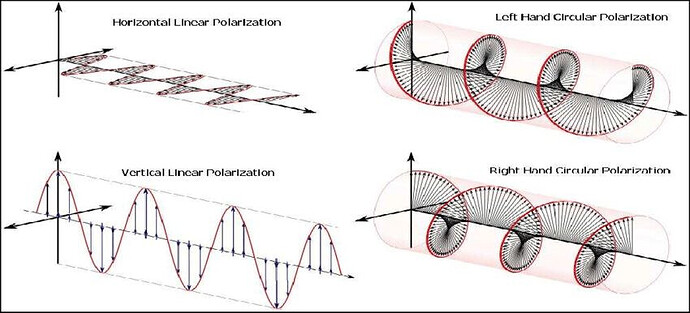Few Reasons:
-
Propagation Characteristics: In some environments, such as terrestrial point-to-point links or satellite communication, one polarization may be better suited than the other due to the way radio waves interact with the Earth’s surface or the atmosphere. This can vary based on factors like distance, terrain, and atmospheric conditions.
-
Interference: In urban environments, reflections off buildings and other structures can cause multipath interference, where signals arrive at the receiver through multiple paths. Different polarizations may experience different levels of interference, and choosing the appropriate polarization can help mitigate this issue.
-
Antenna Design: The design of the antennas used in the system also plays a significant role. Antenna gain and radiation patterns can vary based on polarization. The choice of polarization should align with the antenna’s characteristics to optimize signal transmission and reception.
-
Cross-Polarization Isolation: In some cases, vertical polarization may provide better cross-polarization isolation, meaning it is less susceptible to interference from signals of the opposite polarization. This can be important in scenarios where multiple communication systems operate in close proximity.
-
Ground reflection: Horizontal polarization is more susceptible to ground reflection than vertical polarization. This is because the electric field of a horizontally polarized wave is parallel to the ground, which means that it is more likely to be reflected back by the ground. This can cause interference and signal attenuation.
-
Rain and snow: Horizontal polarization is also more susceptible to attenuation by rain and snow than vertical polarization. This is because the water droplets and snowflakes in rain and snow are oriented horizontally, which means that they are more likely to absorb horizontally polarized microwaves.
-
Trees and vegetation: It can also attenuate horizontally polarized microwaves more than vertically polarized microwaves. This is because the leaves and branches of trees and plants are oriented horizontally.
Horizontal polarization can be used more effectively in the following situations:
-
Short-range communication: Horizontal polarization is less susceptible to multipath interference than vertical polarization, which can be a problem in short-range communication.
-
Line-of-sight communication: Horizontal polarization is not as affected by obstacles as vertical polarization, which makes it a better choice for line-of-sight communication.
-
Indoor communication: Horizontal polarization is less susceptible to reflection from walls and other surfaces than vertical polarization, which makes it a better choice for indoor communication.
LinkedIn: ![]()
